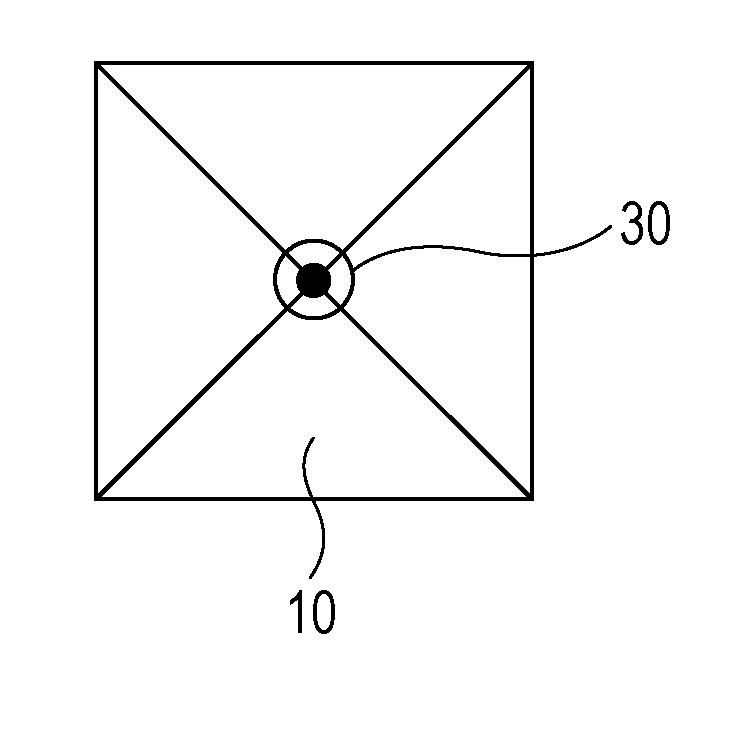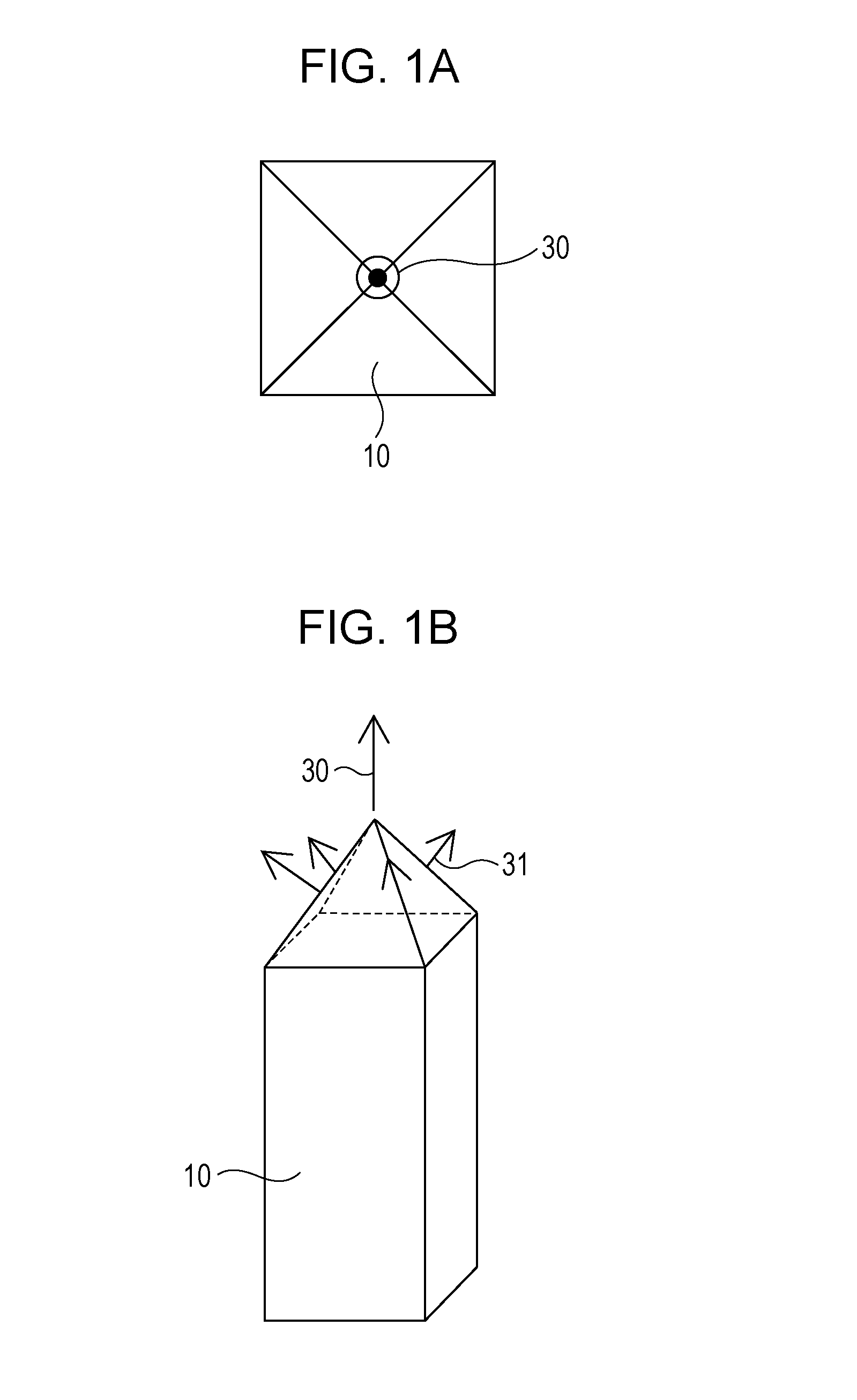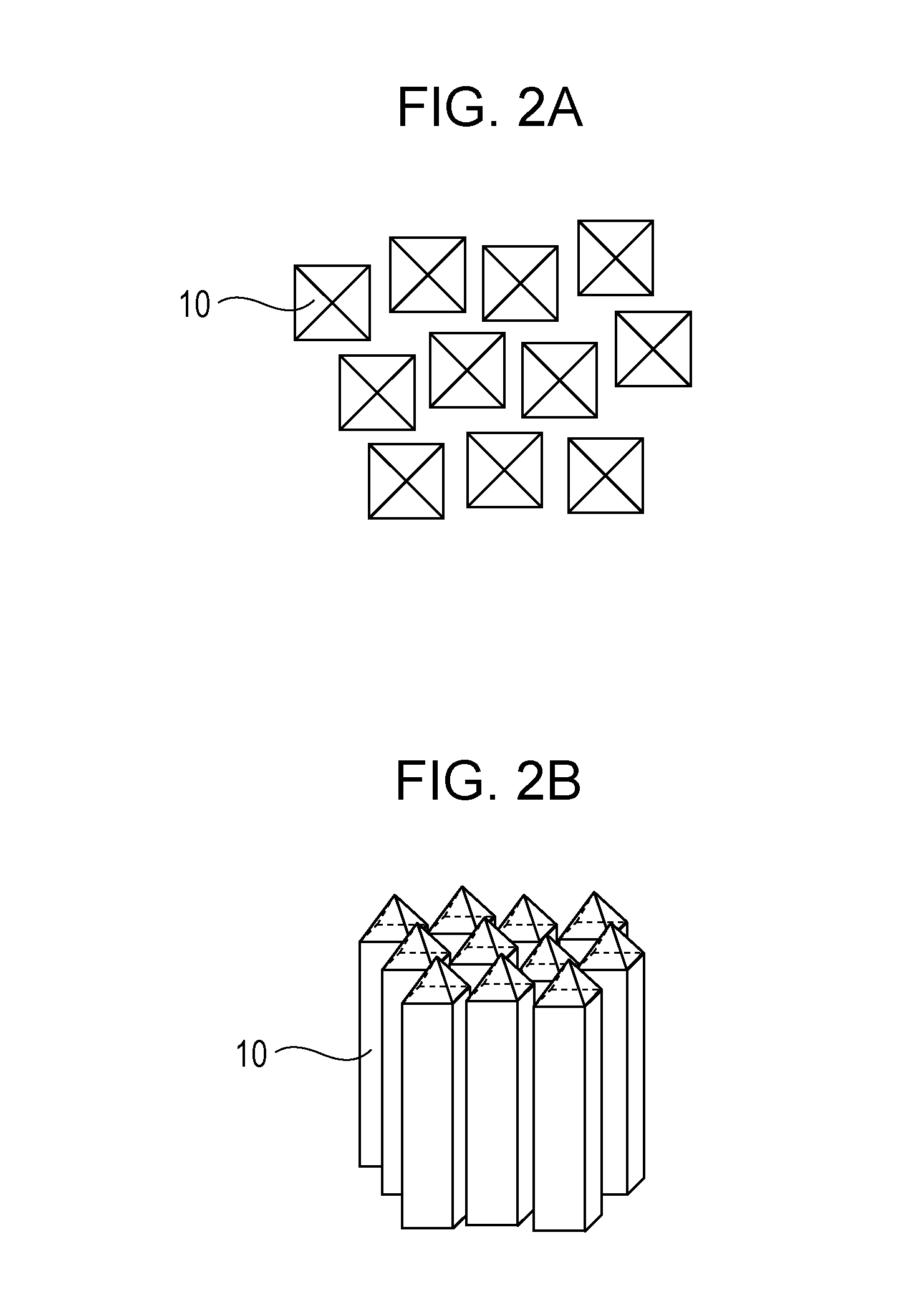Scintillator panel, radiation detector, and methods for manufacturing the same
a technology of radiation detector and scintillator, which is applied in the direction of instrumentation, conversion screens, nuclear engineering, etc., can solve the problem of allowing needle crystals to be aligned in a plane at the surface of the substra
- Summary
- Abstract
- Description
- Claims
- Application Information
AI Technical Summary
Benefits of technology
Problems solved by technology
Method used
Image
Examples
first embodiment
[0034]In a first embodiment, the scintillator material is intermittently deposited by using a shutter having a shield portion that blocks the scintillator material and a penetrable portion through which the scintillator material passes. Such intermittent deposition enables the amount of the scintillator material deposited on the deposition surface to change according to the angle between the projected incident direction and the reference direction. The shutter may have a plurality of penetrable portions 14 as the shutter 9 shown in FIGS. 5A and 5B. The shutter 9 acts as a shield that blocks the scintillator material, and the scintillator material passes through the penetrable portions 14 of the shutter 9. In FIGS. 5A and 5B, the penetrable portions 14 are openings. For the sake of distinguishing shutters used for ordinary deposition (which open for deposition and close for suspending deposition), the shutter for intermittent deposition may be referred to as an intermittent depositio...
second embodiment
[0051]A second embodiment illustrates a vapor deposition performed in a deposition apparatus in which a substrate 16 rotates with respect to a deposition source 1, as shown in FIGS. 5A and 5B, without disposing a shutter 9 between the substrate and the deposition source. The present embodiment is different from the first embodiment in that the amount of the scintillator material deposited on the deposition surface changes according to the angle between the projected incident direction and the reference direction by varying the rotation speed of the substrate during a single rotation, instead of using the shutter. Other portions are the same as in the first embodiment and thus description thereof is omitted.
[0052]In the present embodiment, the substrate is rotated in a plane on the axis thereof, and the rotation is suspended at the position where the projected incident direction and the reference direction form a specific angle. Since the deposition material is deposited even during ...
third embodiment
[0055]In a third embodiment, a plurality of deposition sources 1a to 1d and corresponding shutters 18a to 18d are used as shown in FIG. 7, instead of using a shutter. Each set of the deposition source and the shutter is disposed so that the reference direction and the projected incident direction form a specific angle. Then, the amount of deposit changes by opening and closing the shutters one after another. This is the difference from the first embodiment.
[0056]In this instance, the substrate need not necessarily be rotated in a plane, and the same effect as the rotation of the deposition source can be produced by sequentially changing the deposition sources from which the deposition material is fed. The shutters 18a to 18d shown in FIG. 7 each have an opening (17a to 17d) and are opened or closed by the rotation thereof. The number of openings may be one or more. If the deposition material is fed from a plurality of deposition sources at one time, however, in-plane orientations ar...
PUM
 Login to View More
Login to View More Abstract
Description
Claims
Application Information
 Login to View More
Login to View More - R&D
- Intellectual Property
- Life Sciences
- Materials
- Tech Scout
- Unparalleled Data Quality
- Higher Quality Content
- 60% Fewer Hallucinations
Browse by: Latest US Patents, China's latest patents, Technical Efficacy Thesaurus, Application Domain, Technology Topic, Popular Technical Reports.
© 2025 PatSnap. All rights reserved.Legal|Privacy policy|Modern Slavery Act Transparency Statement|Sitemap|About US| Contact US: help@patsnap.com



